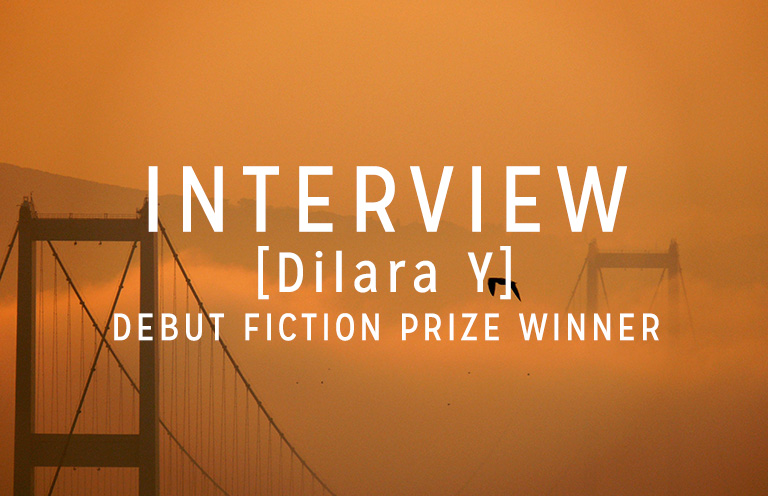Dilara Y’s The Peace Bride was selected by Julie Iromuanya as the winner of this year’s Debut Fiction Prize. Read the story here and then check out this interview in which she talks about the origins of the story, belonging, and how this story came together.

The Peace Bride is such a vivid character. Where did the idea for this story originate?
This story started with an image in my mind of a bride wearing a dirty white dress and hiking boots. I recognized her as an imagining based on headlines about femicide in Turkey. Living with a Turkish grandmother means that TV news headlines are often blaring in the background as you go about your day. I thought about how these headlines, animated by the anxieties of our elders, can take on a life of their own and become an almost spectral presence that follows Turkish women everywhere. I started to imagine the Peace Bride as a ghost cobbled together from headlines and cautionary tales. The ghost in this story is a fictional character, but the questions she represents are inspired by the work of feminist organizers in Turkey.
In particular, the Turkish public was haunted by the 2008 rape and murder of an Italian performance artist and filmmaker known as Pippa Bacca whose project Brides on Tour aimed to promote peace by interviewing women survivors of war and genocide. Bacca’s murder on the outskirts of Istanbul made international headlines, sparked protests and drew attention to the ubiquity of femicide in Turkey. I remember this as a moment of public political reckoning in Turkey and this is the historical backdrop I envisioned when I started to write this story.
Most of the women in this story are victims of violence in one way or another, but also each, in their own way, stand up against it even while being blamed by society (in many cases other women) for their (perceived) role in the violence against them. Was this push-pull always at the forefront of the story, or was it something that emerged as you wrote?
I think this emerged as I wrote. A couple drafts in, I realized that I wanted to write a coming-of-age ghost story about a protagonist who is struggling with feelings of powerlessness as she tries to make sense of the violence around her. I wanted Leyla to come to terms with her own vulnerability, but also with her power. To deal with feelings of helplessness and rage, Leyla envisions the Peace Bride somehow incapacitating the perpetrators of violence. Through her interactions with the Peace Bride, Leyla struggles with questions about how and why groups of people become vulnerable to violence and premature death, and what to do with the power of being comparatively less vulnerable than others around her. As she wonders whether the ghost that haunts her has any effect on the physical world, Leyla comes to a more structural understanding of violence and finds power in collective action and protest.
This story, at least in part, feels like it’s about the loneliness of leaving home. What do you see as the role of place or home in this story?
My mom is from Turkey, my dad is from the US, and I grew up traveling frequently between countries, so I’ve always been interested in the dynamics of migration, home and belonging. The characters in this story are perpetually unsettled and in flight. They are searching for freedom as well as safety and belonging, looking for ways to resist the social rules and unjust laws that threaten their ability to make a home. For Leyla, leaving her family’s home means that the price of freedom is loneliness. More generally, the characters are looking for ways to make their homes in and beyond places torn by war or poverty or racism or misogyny, as well as ways to be at home in bodies that are the targets of violence.
What was the process of writing this story? Did you have a clear sense of where it was going from the start, or is it something that came together over many drafts?
The writing process was exploratory and came together over many drafts. I started by jotting down scenes and then considered different ways to organize them. I generally don’t write stories chronologically from beginning to end, so my initial drafts can read more like a series of vignettes that need to be shaped into a coherent narrative. At one point, this was a novella, which I challenged myself to cut down into short story form. Friends read early versions and helped identify parts that could be pulled out to become separate stories. There are always so many ways to slice and reconfigure and revise. I enjoy thinking about these possibilities, but it’s easy to get carried away. I use submission deadlines to interrupt what might otherwise become endless revision.
What else are you working on?
I’m working on a collection of interrelated short stories set in Istanbul and San Francisco, exploring the meanings of home, power and belonging through different characters and voices.
I’m very thankful to the team at The Masters Review as well as guest judge Julie Iromuanya for making a home for my first short story.
Interviewed by Jen Dupree
